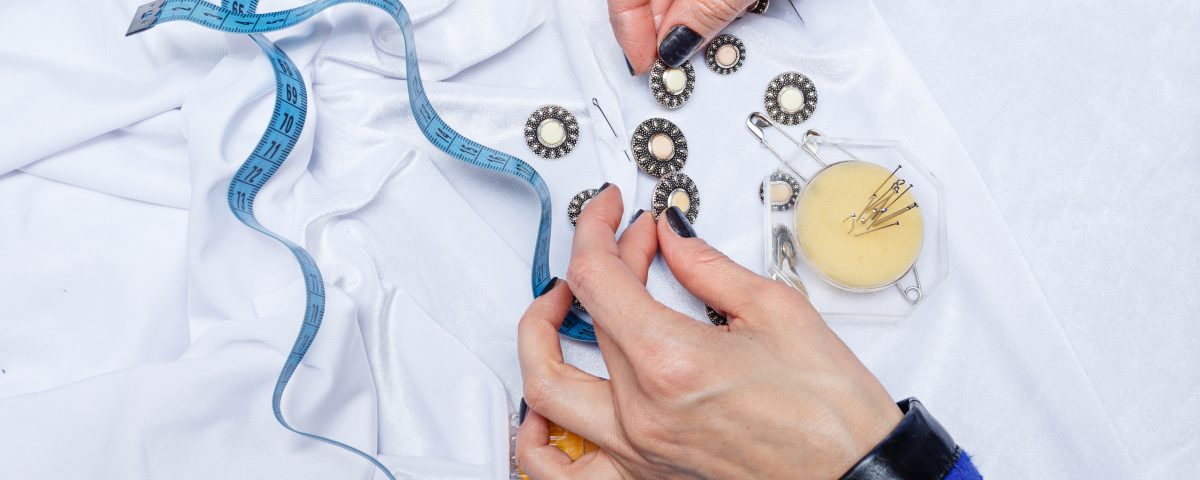Manufacturing Clothing or Accessories in California? You Need a Garment Registration Certificate.

The Fine Print: Setting Up Your Terms & Conditions for Online Sales
September 12, 2016
For The Love of 3D
September 12, 2016Last Wednesday, I had the privilege of attending a PeoplewearSF event where Lana Hogue, the Operations Manager at Betabrand, spoke about the enforcement of garment manufacturing certificates, which are to be filed with the Labor Commissioner of California.
Here’s the major takeaway from the presentation: Most new apparel or accessory companies don’t know that when they use a third-party manufacturer in California, they still need to register with the Labor Commissioner. Ignoring this requirement can be extremely detrimental to your business.
To clarify this message, even if you contract out the manufacturing of your apparel or accessory products to another business, you still must go through the registration process, and oversee the third-party manufacturer to make sure they are in compliance with the Labor Commission rules.
Let’s talk about the basics of these rules and the steps you’ll need to take to be in compliance. Remember these rules specifically apply to manufacturing in California. Like all our blog posts, this is just general information, and shouldn’t be used as legal advice since every situation is unique. Should you have questions, feel free to email Rachel at rachel@lawontherunway.com.
We’ve all heard stories of garment manufacturing workers entrenched in terrible working conditions. Because of these stories, the Labor Commission is particularly concerned about protecting workers, holding everyone that has influence over the working conditions accountable for this protection. To do this, the Labor Commission requires that both the manufacturing facilities and those contracting with the manufacturing facilities pay the workers, have worker’s compensation insurance, publicize their contact information, and take an exam on the regulations of safety and compensation.
Who Needs To Register
The Department of Industrial Relations explains that both Manufacturers and Contractors need to register. To keep this basic for now, consider the Manufacturers as the ones actually cutting, sewing, dying, or processing a garment or an accessory for sale or resale. The garment manufacturing definition does include, but is expressly not limited to clothing, hats, gloves, handbags, hosiery, ties, scarfs, and belts. The definition of Contractors is businesses or individuals who “with the assistance of employees or others, is primarily engaged in sewing, cutting, making, processing, repairing, finishing, assembling, or otherwise preparing any garment or any article of wearing apparel or accessories designed or intended to be worn by any individual, including, but not limited to, clothing, hats, gloves, handbags, hosiery, ties, scarfs, and belts, for another person. ‘Contractor’ includes a subcontractor that is primarily engaged in those operations.” Labor Code Section 2671(d)
Take note, it is because of the inclusion of the phrase “with the assistance of employees or others” that businesses are required to register, even when they are using a third-party to manufacture their products.
Responsibilities of a Contractor
- Safety of Workers / Workers Compensation Insurance
Choose the Manufacturer wisely. As a Contractor, you’ll want to visit the facilities to see how safety precautions are taken. Manufacturers and Contractors can be held liable for injuries occurring at the manufacturing facility. Both the Manufacturer and the Contractor will need to get workers compensation insurance and present that insurance at time of registration.
- Payment of Wages
It is important to always pay your manufacturing facility on time for their services. As a Contractor, you will be responsible for the labor wages if the Manufacturer does not pay its employees. Labor Code 2673.1 explains this relationship:
“(a) To ensure that employees are paid for all hours worked, a person engaged in garment manufacturing, as defined in Section 2671, who contracts with another person for the performance of garment manufacturing operations shall guarantee payment of the applicable minimum wage and overtime compensation, as required by law, that are due from that other person to its employees that perform those operations.”
If you are planning to become a Contractor, do your research. Check to make sure that your manufacturer has a current registration: http://www.dir.ca.gov/databases/dlselr/garmreg.html
Examination Requirement of Registration
As briefly mentioned above, part of the registration requires an examination on the required safety procedures, and the applicable wage & hours laws. The person who will take the garment exam must be listed on the application as the individual owner, one of the partners, one of the corporate officers, or member of the limited liability company with at least 20% ownership. To review the study documents for this exam, please visit: http://www.dir.ca.gov/dlse/Garment-DOSH_Study_Materials.pdf
Registration Documentation for Contractor
In preparation for registration, gather these documents:
- Workers compensation insurance certificate
- A completed Internal Revenue Service (IRS) form 8821
- Contract between your business and the Manufacturer
- Your Manufacturer’s worker’s compensation insurance certificate
- Most recently filed Employment Development Department (EDD) DE-9 or DE-9C report
- Department of Labor Standards Enforcement 810A – Certification of Compliance
- A copy of the Fictitious Business Name Statement for any business name(s)
- Copies of both the State Employment Tax I.D. Number (SEIN) and the Federal Tax I.D.number (FEIN) or application for the same
- A copy of the public health license (only if business is located in Los Angeles County, with the exception of Vernon, Pasadena and Long Beach)
- Applicable fees (registration fees & examination fees)
- Completed application: http://www.dir.ca.gov/dlse/GarmentApplication.pdf
Once again, this blog is meant to be a brief overview to help you get started on the registration process, which has many facets. Please contact the Department of Labor Standards Enforcement or an attorney if you have any questions.

